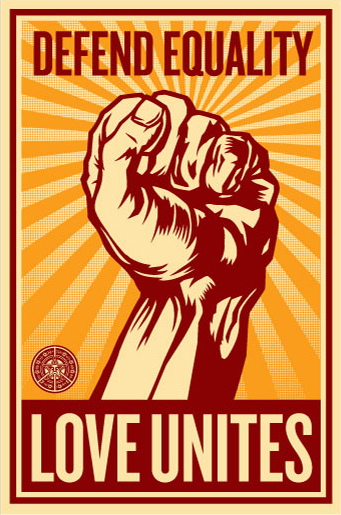
This is an Obama IS America! original photo.
Model: OIA! contributor - Jingmai
Why are we pumping all of our money into industries destructive to humans and to our Planet that limit the sharing of wealth, such as the War/Defense Industry, the Banking/Finance Industry, Agro-Industry, the Auto Industry? If we diverted the trillions of dollars we pump into these industries alone per year into CREATIVE industries such as the Green Industry*, the Art Industry, or the Education Industry, we could probably subsidize creativity and growth at home AND abroad, and the world would be completely beautiful, not under threat of ecological collapse, and full of PEACE. To me, it seems that this is the natural course of evolution - ending war (which hearkens to the primate side of us) and giving in to the creative capacities of our great big human brains. If this is something that concerns you...contact your local and state representatives and let them know how you feel!!!!!!
With regard to money, we spend more money on bombing foreign babies (and people generally) than educating babies, whether our own or those of foreign countries, nevermind investing in the art world. Check out the federal budget for 2010 by clicking HERE. Please observe that the defense budget has increased to $663 billion, with health and human services at $76 billion, education at$47 billion, agriculture at $26 billion, justice at $26 billion and labor at $13 billion. There is interestingly no information on the budget for National Intelligence (which is its own department separate from defense). We most likely spend more on defense than on all other 'public' investments combined. P.S. Let's please give a HUGE kudos to Obama for publishing the budget for all to see.
The following link will connect you to the article below, published by the University of Southern California's journalist resource site on politics and society:
*The word 'industry' is used in this paragraph to imply that ANYTHING can be a business and ANYTHING can generate money. Human beings, after all, made up the concept of the 'market' and made up money to replace trading with beads and breads. Economics is not a part of nature. it is a pure conceptualization of human beings, who try to use ideas of 'human nature' to justify particular economic policies and regimes. We as a human species could probably make some wiser decisions as to what we invest in - we NEED to, to make our planet more sustainable.
Scant Stimulus Money for the Arts
April 17, 2009

By Elizabeth Currid
Few recognize the significant economic contributions that the art world generates through jobs and tax revenue, so it was no surprise that the stimulus package’s allocation of $50 million to the arts was seen by many as a significant sum. In one fell swoop, the National Endowment for the Arts’ budget was increased by about a third.
Maybe it’s just the skeptic in me, but I don’t think anyone on Capitol Hill deserves a pat on the back for throwing artists a few free paintbrushes. The amount reserved for the arts is less than .00000000005 percent of the total package. I don’t mean to be ungrateful, especially after Robert Redford himself had to place a call to Speaker of the House Nancy Pelosi to get her to fight for the funding, but let’s consider some past contributions to and from the art world.
Redford’s own cultural juggernaut, the Sundance Film Festival, generates $60 million in those 10 days of frolicking in Park City, Utah. And according to the Alliance for the Arts, the cultural industries generate $21 billion in tax revenues to New York City. If you look at the workforces of Los Angeles and New York City, 5 percent are employed by arts-related industries. Studies show that in the San Francisco Bay Area, the arts generate $1.2 billion in economic activity each year.
When you do the calculations, the sum allocated to the arts through the stimulus package actually seems a bit stingy. Just to be clear: The financial industry posts losses of $763 billion and tens of thousands of jobs, and the government commits hundreds of billions of dollars to bailing the industry out. According to Americans for the Arts, for-profit arts industries contribute $166.2 billion, generate 5.7 million jobs and return nearly $30 billion in government revenue annually — and they get $50 million from the government.
I know that it’s just billions, not trillions, but at least the arts are giving tothe country’s economic health, rather than taking away from it. Think of the billions lost in Ponzi schemes, the billions handed out for corporate bonuses, and the trillions being used to save the financial and auto industries.
The problem with the paltry stimulus funding is that anything seems better than the nothing that the arts usually get; so just funding the arts gets applauded. Truthfully, $5 million would likely receive the same level of applause as $50 million. With the arts, things are usually less linear than just handing money out to fund public art. When we fund the arts with government money, it pays back in ways that are not so easy to put into an Excel spreadsheet, but which remain imprinted on the cultural landscape.
Consider the impact during the Great Depression of the Federal Art Project, which was the arts arm of the Works Progress Administration (WPA). Mark Rothko, Willem de Kooning, Lee Krasner and Jackson Pollock, otherwise known as the Abstract Expressionists, were among the greatest artists of the 20th century; what you might not know is that their success was substantially predicated on funding from the WPA. The project financed dozens of out-of-work artists, backing public artwork, teaching and research around the country. Over the course of the program, which lasted from 1935 to 1943, the WPA funded more than 200,000 art projects. This may seem frivolous to some, but those close to the arts realize that this initiative helped form one of the most seminal movements in art history.
On one hand, what’s done is done, and the arts stimulus allocation is one point in the column for the liberal art lovers. On the other hand, the GOP shouldn’t get too steamed. After all, $50 million is an algebraic joke of a percent in the stimulus package. Given how much art gives the cities and regions in which it resides, this is a bargain-basement price.
Elizabeth Currid is assistant professor at the USC School of Policy, Planning, and Development and author of The Warhol Economy: How Fashion, Art and Music Drive New York City.













No comments:
Post a Comment